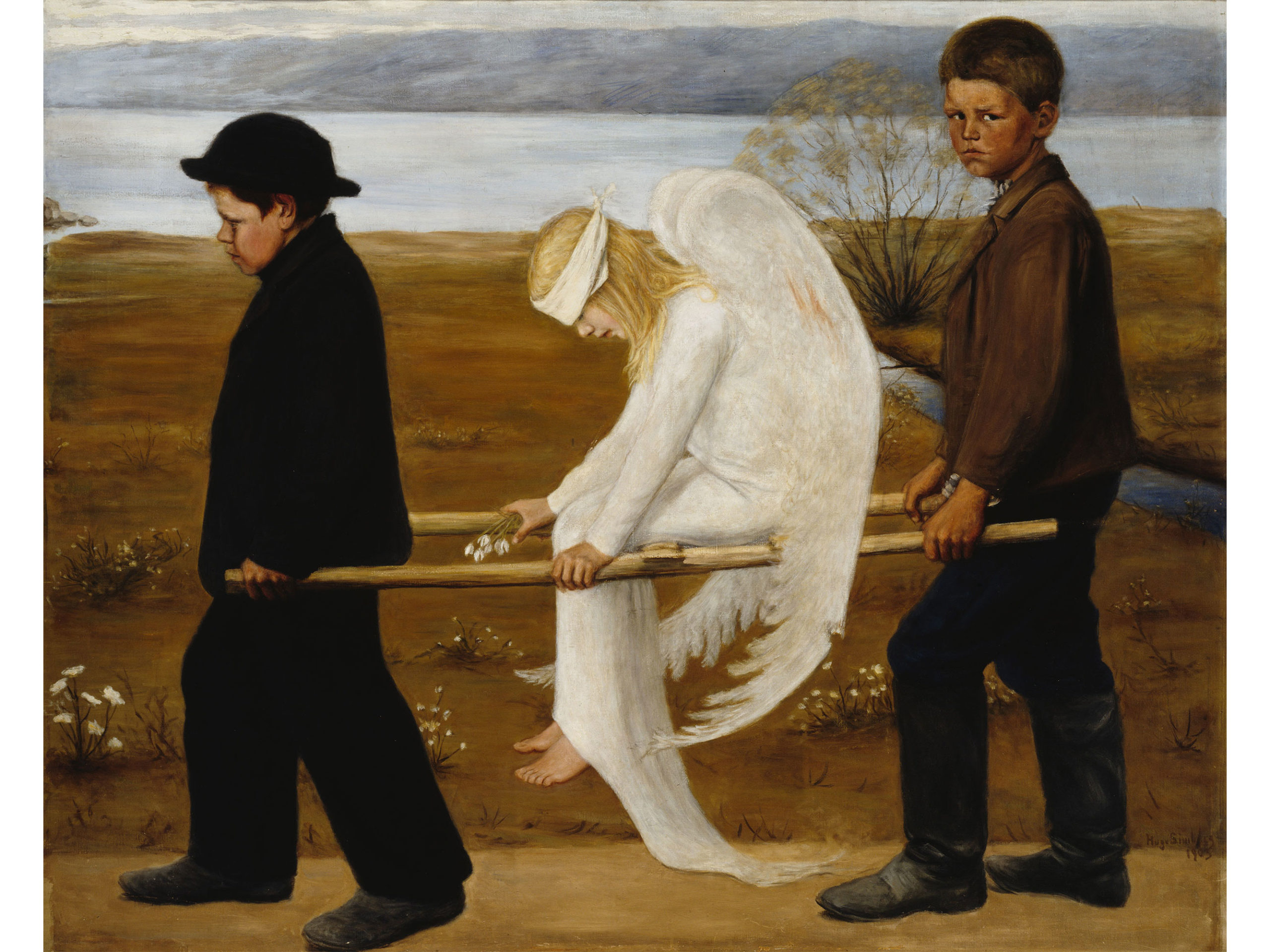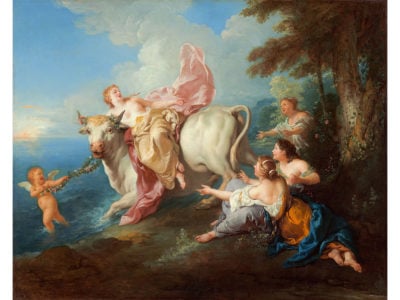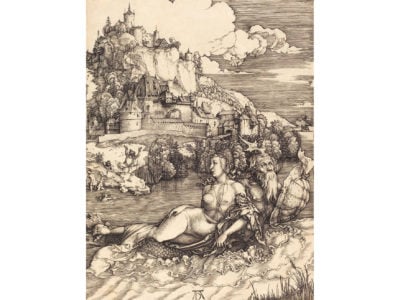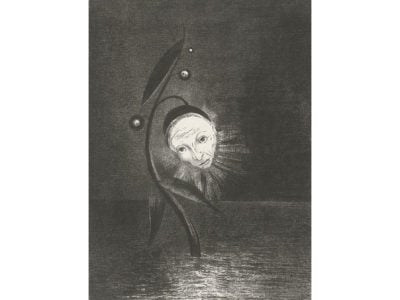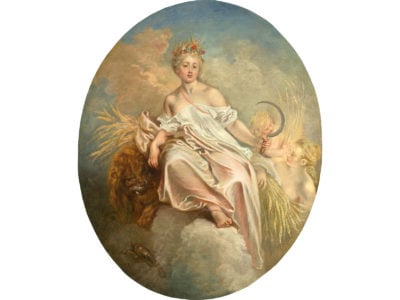No products in the cart.
Free Shipping to U.S.A.
Hugo Simberg : “The Wounded Angel” (1903)
Museum Quality Giclée on Fine Art Paper
- Matte Finish does not pick up glare from interior lighting
- Smooth Surface maximizes sharpness and preserves detail
- Accent Borders display the artwork uncropped and ready to mat
- In-house Printing assures artistic quality standards
The Wounded Angel is one of the most recognizable works by the Finnish symbolist painter Hugo Simberg. It was a source of strength to the artist as he was being treated for tubercular meningitis at Deaconess Hospital in Kallio, Helsinki.
Numerous interpretations have offered for the deeply enigmatic painting. The Ateneum art museum reads it as a comment on “The vulnerability of life and ideals, as well as the proximity of death and the helplessness of man,” observing that “The procession of a black-skinned boy can be interpreted as a symbol of death. A humanly depicted angel reflects the fragility of ideals. The boy running behind looks appealingly at us and shows that the subject of the board applies to each of us.” The angel has also been interpreted as a symbol of faith, of Finland under Russian rule, and as a metaphor for Simberg’s ailment. Simberg himself believed that meaning was in the eye of the beholder, and that whatever response the artwork evoked in the viewer was as valid as any other.
Together with The Garden of Death, a version of The Wounded Angel is one of two frescos by Simberg adorning Tampere Cathedral in Tampere, Finland; a Lutheran church designed in the National Romantic style by Lars Sonck and built between 1902 and 1907. It was voted Finland’s “national painting” in 2006.
Product Information
Expect crisp detail and vivid color from our giclée process fine art prints. We use archival pigment inks on cotton fiber paper to achieve a wide color gamut, deep blacks and beautiful tonal transitions. Unlike posters, they will not fade or yellow, but maintain their original quality for as long as you own them.How to Frame
Historical artworks were produced in whatever shapes and sizes best suited the artists and their patrons, and these rarely correspond to the proportions of modern, mass-produced frames. Most reproductions sold on the web are cropped to an arbitrary standard, compromising the integrity of the original artwork. We solve this by using accent borders to make up any differences in proportion.Framing may be as simple as inserting the print into a standard size frame with the borders showing. In many cases, our customers choose to have them matted. Borders allow space for framers to mount the print while covering little, if any, of the artwork. Our images are sized to provide desirable mat widths in common frames.
Sizes 9” x 12”, 12” x 16”, and 16” x 20” are designed to be matted in larger frames, such as 11” x 14”, 16” x 20” and 20” x 24”, respectively. Larger prints may be matted in frames of equal size, the borders corresponding to the shape of the mat. Where the artwork is unusually square or narrow, other sizes may be preferred.
If our sizing does not meet your requirements, we provide customization free of charge. Please contact us to discuss the details.
Shipping and Returns
All orders ship within one business day. The following services are available at checkout:| Shipping Class | Price | Estimated Delivery Window |
|---|---|---|
| USPS First Class Parcel | Free | 3 – 5 business days |
| USPS Priority Mail | $3.99 | 2 – 4 business days |
| USPS Priority Mail Express | $29.99 | 1 – 3 days, guaranteed |
| Shipping Class | Price | Estimated Delivery Window |
|---|---|---|
| USPS First Class International | $11.99 | 1 – 3 weeks |
| USPS Priority Mail Express | $56.99 | 3 – 5 business days |
| Shipping Class | Price | Estimated Delivery Window |
|---|---|---|
| USPS First Class International | $17.99 | 1 – 4 weeks |
| USPS Priority Mail Express | $62.99 | 3 – 5 business days |
* International orders may be subject to import taxes at time of delivery.
Returns Policy
If you are unhappy with your order for any reason, you are welcome to return it within 60 days for a full refund. Please contact us and return your item(s) to: The Ibis 809 Grant Street Endicott, NY 13760Your return will be processed on receipt.

